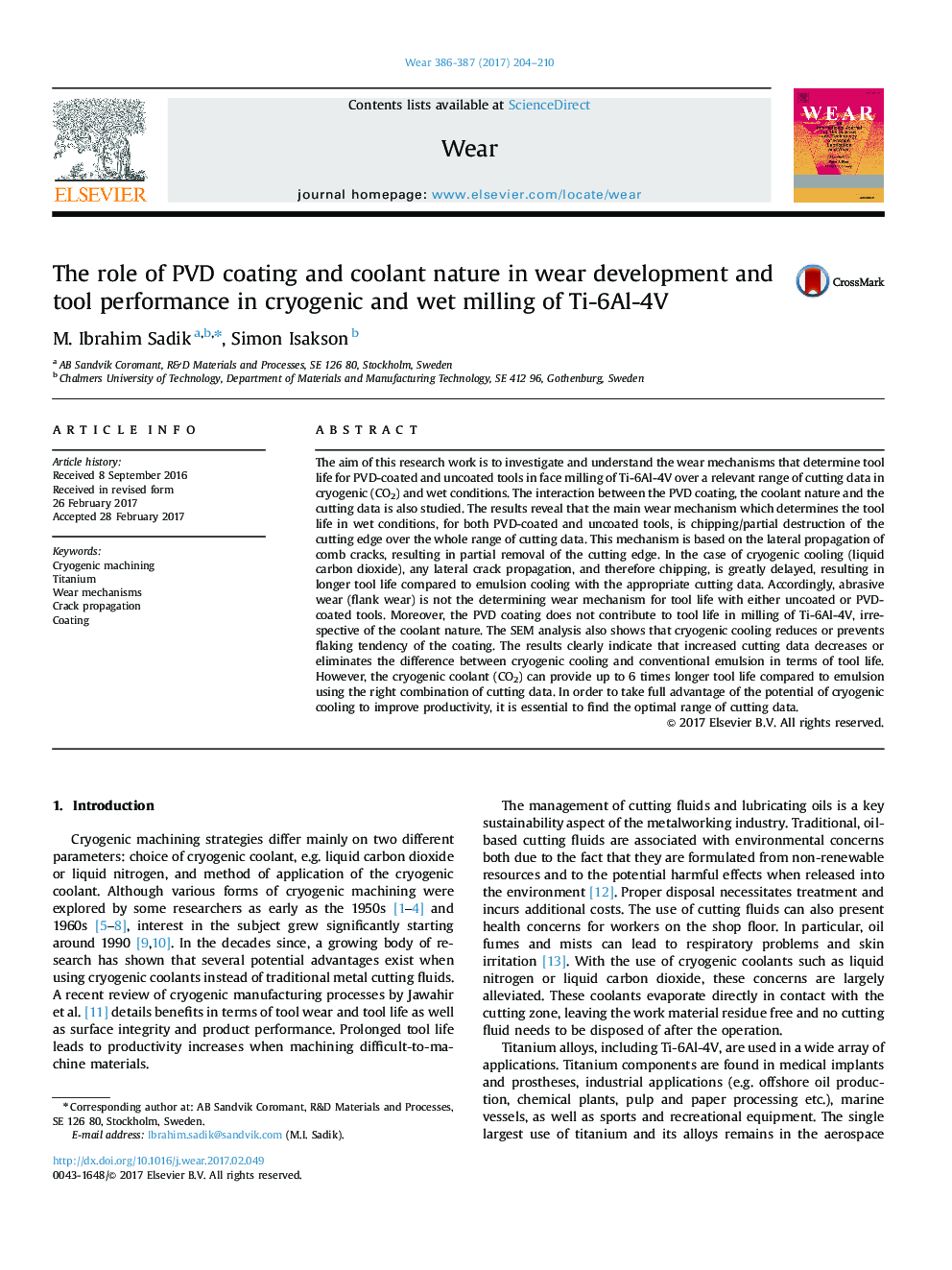| کد مقاله | کد نشریه | سال انتشار | مقاله انگلیسی | نسخه تمام متن |
|---|---|---|---|---|
| 4986449 | 1454947 | 2017 | 7 صفحه PDF | دانلود رایگان |

- Milling of Ti-6Al-4V is studied with cryogenic (CO2) and emulsion cooling.
- Abrasive wear is not the determining wear mechanism irrespective of coolant and coating.
- Lateral crack propagation leads to chipping/partial destruction of the cutting edge.
- PVD coating does not contribute to tool life in cryogenic or wet milling of Ti64.
- Increased cutting data reduces the contribution of cryogenic cooling to tool life.
The aim of this research work is to investigate and understand the wear mechanisms that determine tool life for PVD-coated and uncoated tools in face milling of Ti-6Al-4V over a relevant range of cutting data in cryogenic (CO2) and wet conditions. The interaction between the PVD coating, the coolant nature and the cutting data is also studied. The results reveal that the main wear mechanism which determines the tool life in wet conditions, for both PVD-coated and uncoated tools, is chipping/partial destruction of the cutting edge over the whole range of cutting data. This mechanism is based on the lateral propagation of comb cracks, resulting in partial removal of the cutting edge. In the case of cryogenic cooling (liquid carbon dioxide), any lateral crack propagation, and therefore chipping, is greatly delayed, resulting in longer tool life compared to emulsion cooling with the appropriate cutting data. Accordingly, abrasive wear (flank wear) is not the determining wear mechanism for tool life with either uncoated or PVD-coated tools. Moreover, the PVD coating does not contribute to tool life in milling of Ti-6Al-4V, irrespective of the coolant nature. The SEM analysis also shows that cryogenic cooling reduces or prevents flaking tendency of the coating. The results clearly indicate that increased cutting data decreases or eliminates the difference between cryogenic cooling and conventional emulsion in terms of tool life. However, the cryogenic coolant (CO2) can provide up to 6 times longer tool life compared to emulsion using the right combination of cutting data. In order to take full advantage of the potential of cryogenic cooling to improve productivity, it is essential to find the optimal range of cutting data.
Journal: Wear - Volumes 386â387, 15 September 2017, Pages 204-210